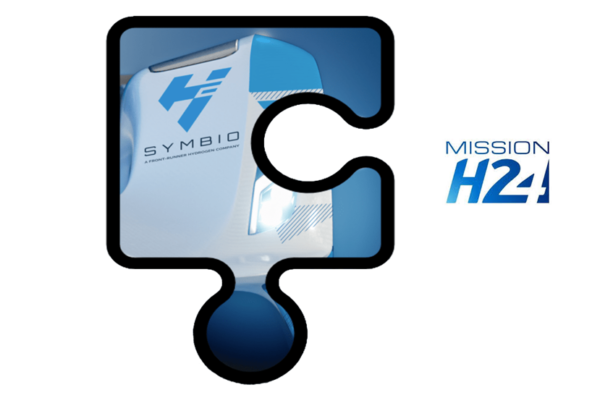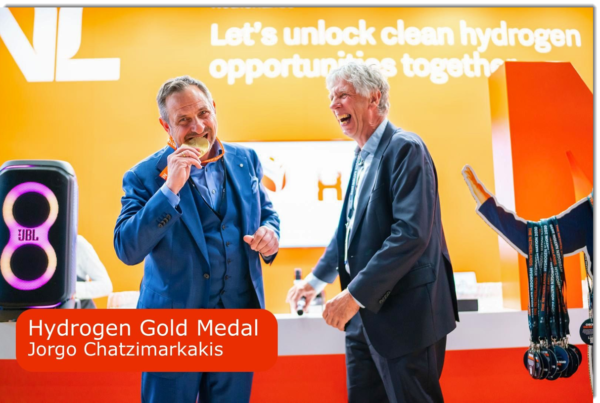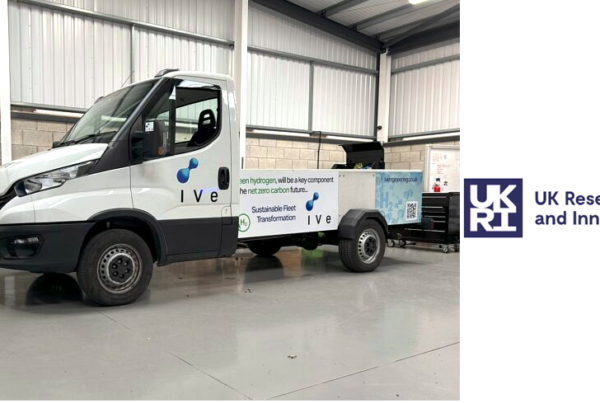
“That’s the heading we hoped we’d get to write when we started this project.”
Highlights:
- Drilling commenced on 11 October at Ramsay 1 on the Yorke Peninsula.
- Ramsay 1 is the first natural hydrogen exploration well to be drilled in Australia.
- Surface drilling successfully completed with the well cased off at 220m.
- Faulting and fractures encountered in the sections below 220m, indicating pathways for hydrogen to migrate from the source.
- Encountering natural fractures has led to some delays and slower than anticipated drilling times.
- Hydrogen detected at elevated levels while drilling the Parara Formation, which was confirmed by onsite mudgas samples, and offsite laboratory analysis.
- Further drilling through the target zones and testing are ongoing.
Further to its previous market releases regarding its flagship Ramsay Natural Hydrogen Project, the Directors of Gold Hydrogen Limited (Gold Hydrogen, ASX: GHY, the Company) are pleased to announce an operational update on the drilling for the Ramsay 1 well.
After commencing operations on 11 October 2023, the surface section was successfully drilled and cased off on Saturday 14 October at 220m MD. On Sunday night, further drilling commenced to test the identified target zones. While drilling in the Parara Formation, drilling has encountered a system of permeable faults and natural fractures. These are encouraging geological findings as these faults and fractures may represent possible pathways to allow for hydrogen to migrate from the source. This is an important technical confirmation of the geological setting at Ramsay.
It is encouraging to report that while drilling through the Parara limestone formation, hydrogen was detected at elevated levels (above background levels) via the advanced mud logging services provided by SLB. The samples were collected on surface and contained an expected high level of air contamination. Further testing and analysis of these samples were conducted in an offsite laboratory and the air corrected composition and values of hydrogen were found to be analogous with offset data.
The results are preliminary in nature and require further uncontaminated down hole samples to be taken and tested, to confirm the exact composition of gas and purity of hydrogen in the formation. Until these downhole samples can be obtained, the exact purity of hydrogen will not be known. Although the objectives of the well have been achieved in detecting natural hydrogen in the Parra Formation, the Company will attempt to collect uncontaminated downhole samples on the well.
The Company set out to test the results of the historic Ramsay Oil Bore drilled in 1931, and believes that the early detection of natural hydrogen at the rig site confirms the existence of natural hydrogen bearing formations within the PEL687 permit area. These results are preliminary in nature, but they support the Company’s ongoing work in discovering Australia’s first natural hydrogen field.
The primary objective of the Ramsay 1 well is to confirm the presence of hydrogen in the subsurface geologic formations, by replicating the identification of hydrogen gas encountered during the drilling of the historic Ramsay Oil Bore back in 1931, and to also more broadly confirm geological modeling based on the exploration data obtained during the past year. Confirming the presence of free-flowing hydrogen is the first step to achieving Gold Hydrogen’s Ramsay Project Objectives.
Ramsay Project Objectives
- From a technical perspective, the primary objectives of the Ramsay Project are to:
- Progress its natural hydrogen Prospective Resources to Contingent Resources and/or Reserves. This will involve the processes of discovery, appraisal, and commercialization.
- Mature portions of the granted title PEL 687 to Production License areas.
Historically, natural hydrogen gas was recovered in three samples taken in Ramsay Oil Bore drilled in 1931. The gas samples were taken at depths of 240.8m, 262.1m, and 507.8m, all indicated as being within the Cambrian Parara Limestone.
Ramsay 1, the Company’s first exploration well, has been designed and located to verify the findings of the historic Ramsay Oil Bore in order to mature the historical occurrences of natural hydrogen to a ‘discovery’ for resource evaluation and reporting purposes. Exploration wells need to be drilled, evaluated, and tested to determine the presence, producibility, extent, and thus ‘discovery’ of hydrogen from the geological reservoirs. Ramsay 1 is targeting the Parara and Kulpara limestone formations, which reside above a fractured granite basement. Subject to the findings of this initial drilling campaign, the Company is planning to test the granite basement as part of the Company’s future exploration activities.
The final timing and location for the drilling of Ramsay 2 will be contingent on the findings from Ramsay 1, but if the decision is made to proceed immediately, it is likely to be drilled in the location outlined in Figure 1, and during the November – December 2023 period. The technical objectives of Ramsay 2 will be similar to Ramsay 1 in terms of well depth and target limestone formations.
Risks and About Gold Hydrogen
It is important to note that there are both geological and potential development risks associated with the Ramsay Project and the Company’s objectives as outlined above. These risks relate to the presence, producibility, and potential volumes of hydrogen, but also due to the location of the resource within agricultural areas and the proximity to National Parks on both Yorke Peninsula and Kangaroo Island, requiring significant landholder and community engagement.
Gold Hydrogen is focused on the discovery and development of world-class natural hydrogen gas in a potentially extensive natural hydrogen province in South Australia. This region has only recently had its natural hydrogen potential identified by the Company. The domestic and global demand for hydrogen, combined with new natural hydrogen exploration techniques and experienced personnel, provides Gold Hydrogen with an extraordinary opportunity to define and ultimately develop a new natural hydrogen gas province.
The combined natural hydrogen permit area of the Gold Hydrogen group is approximately 75,332km^2. Gold Hydrogen holds one granted petroleum exploration license (the Ramsay Project – PEL 687) and its two 100% owned subsidiary companies (White Hydrogen Australia and Byrock Resources) hold an additional seven (7) applications for natural hydrogen exploration within South Australia.
“Telling you we have found natural hydrogen still exists at our South Australia tenement is hugely exciting. Though it is still early days, it’s a significant first step. The key here is we have proved what drillers looking for oil in the 1930s accidentally found – natural hydrogen is in the ground near Minlaton. We also know it was found in similar geological conditions to the find nearly a century ago – in the Parara limestone formation. The other significant point to make from drilling so far is that we’ve found a lot of faults and fractures in the sub-surface. They make the work difficult and slower than expected, but are a good thing, because it could mean our theories are right on how the hydrogen seeps to the surface, through those faults.”
Read the most up to date Fuel Cell and Hydrogen Industry news at FuelCellsWorks




